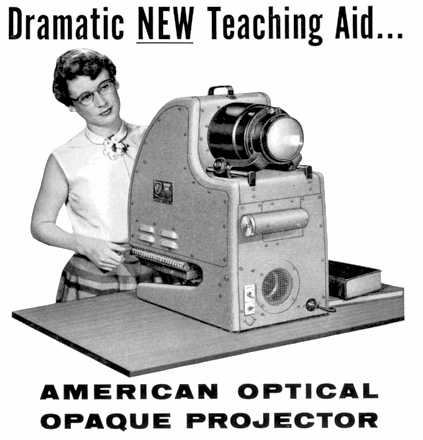Currently, there are many projectors programmed for any task: office, home, education or entertainment. They are also very accessible to anyone and there are many projectors in websites like this or in many stores. But these electronic gadgets changed dramatically in the last fifty years. We do not know how were those vintage projectors
Vintage Projectors of the 1950s
By the 1950s, movie projectors for home use were 8mm and didn’t have auto load and reload capabilities.
Another popular type of 1950s vintage projector was used with slides. The features of the 8mm projector were a bulb that allowed daylight loading and unloading. Film was loaded onto a large feed reel and threaded to a second take-up as the film passed through the “gate.” This is the point where light shines on the film to allow for projection onto a detached movie screen.
8mm film has two tracks on either side of the film that is grasped by a mechanical grip or claw that pulls the film through to the take-up as each frame of the film passes through. This projector also had a mirror that allowed the bulb to illuminate each of the 24 require frames at a specific projection speed. The 8mm vintage projectors of the 1950s did not provide for home movies with sound. 8mm home movies were projected in black and white.
Vintage Projectors of the 1960s
While many 8mm projectors are still in use today, the 1960s introduced the Super 8 projector. Although the film used for the Super 8 vintage projector is 8mm wide as with the older 1950s projectors, the difference in the Super 8 lies with the smaller holes in the film track. The more significant feature of the Super 8 was the ability to add “sound” to home movies. Oxide stripes on Super 8 film accommodated the magnetic recording feature.
In addition, unlike the 8mm projectors, the projector speed could be manually increased or decreased. The Super 8 projector also had added features such as stop, pause, reverse, auto wind and rewind and reel-to-reel projection similar to 8mm feed and gate features. Super 8 vintage projectors were highly adaptable to color which increased their popularity. In addition, the body of these projectors was smaller and parts were more compact.
By the 1960s, carbon arc lamps replaced the formerly installed 8mm projector bulbs. Other features included a shock absorber at the point of intake, a light beam, loop and shutter. It also provided dual image projection and a light blocking feature. Super 8 projectors are still in use mainly for projection of older home movies that are not adaptable to modern projection systems.
Where to Find Vintage Projectors
Vintage projectors like 8mm, 16mm, Super 8 and 32mm can be found online. However, there are also converters available that convert 8mm and Super 8 home movies to today’s DVD and Smartphone use.

